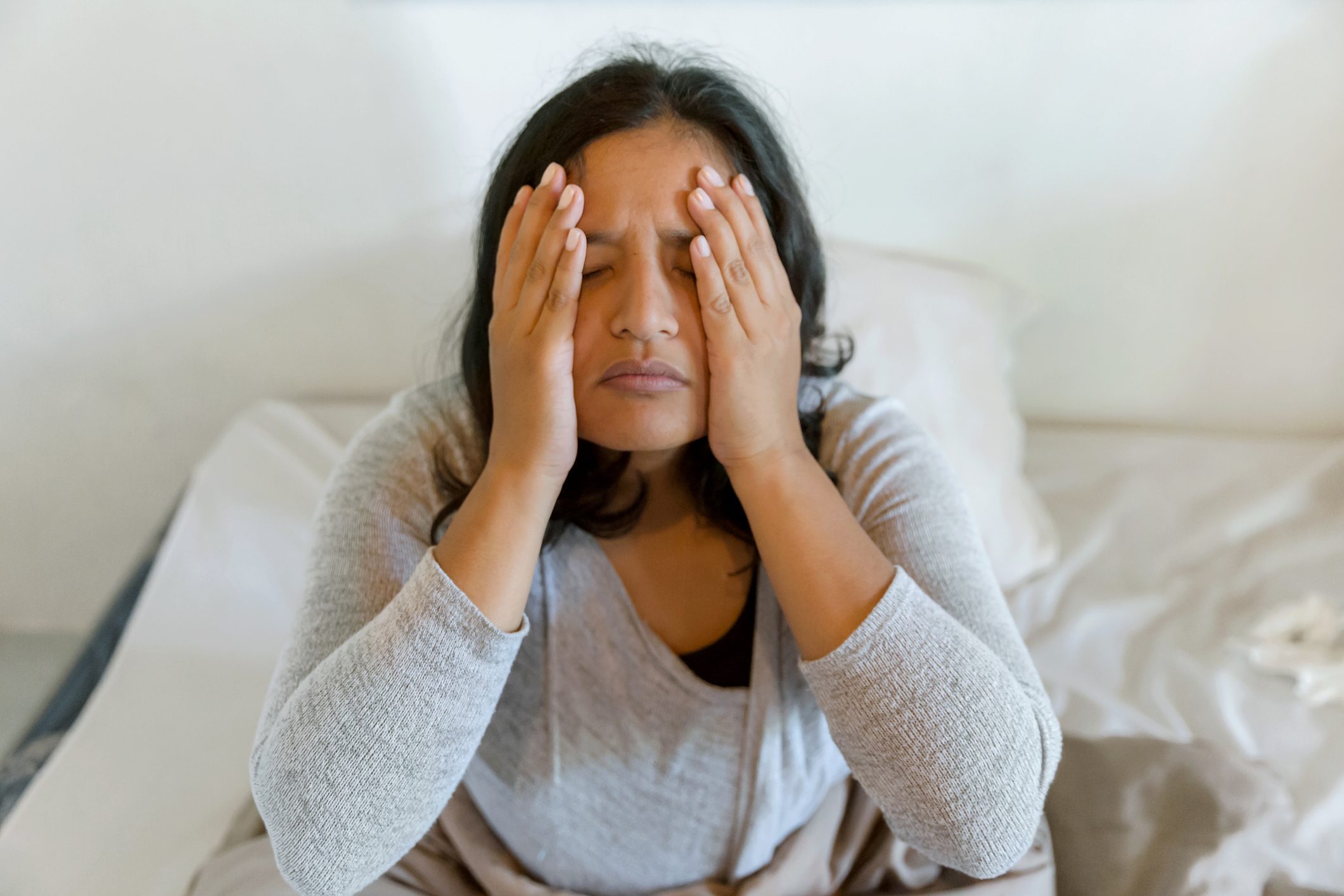If gluten doesn’t agree with you, you’re not alone. The protein mixture is known for giving foods like bread and pasta its elasticity, but for many people, it’s better known for causing symptoms like bloating, brain fog, GI issues, stomach pain, fatigue, and anemia.
Gluten issues show up in two main ways. The first is celiac disease, an autoimmune condition that interferes with how your body absorbs nutrients. It can also trigger or exacerbate other autoimmune issues such as thyroid disease or Crohn’s disease. People with celiac disease can experience severe symptoms like anemia, depression, liver disease, infertility, migraines, and joint pain if they have even a tiny amount of gluten.
You don’t have to have celiac disease to experience distress from gluten, however. While not considered an autoimmune disease, gluten intolerance can have symptoms like fatigue, bloating, GI issues, nausea, and headaches.
The numbers are a little tough to parse on both celiac and gluten intolerance in the U.S. While advocacy groups say about 1 in 133 people in the U.S. have celiac disease,1 and other research suggests at least 5% of the global population has some sort of gluten disorder,2 authors Peter Green and Rory Jones, who wrote Celiac Disease: A Hidden Epidemic believe that as many as 83% of Americans with gluten issues are un- or misdiagnosed.
Plus, it’s on the rise, particularly in women.3 More study is needed as to why this is happening, but many researchers have suggested that environmental factors including eating gluten early in life and the sheer ubiquity of gluten in Western diets could be playing a role in that rise.
What’s Wrong With Gluten?
Whether or not you have a diagnosed gluten issue, though, it can still be best to avoid it altogether. You can read more about how gluten can lead to unwanted weight gain and other uncomfortable symptoms all over my blog, but I’ll cover a few of the basics:
- Gluten can lead to leaky gut. In some people, eating gluten can trigger the release of zonulin, an inflammatory protein in your gut that acts like a gatekeeper.4 Zonulin can be helpful, sometimes—if you eat something contaminated with salmonella, for instance, you’re going to need zonulin to flush out the bad stuff. But if zonulin is released when it doesn’t have to kick out harmful bacteria, it starts to weaken as a gatekeeper. It may allow harmful materials to leak out of your gut and into your bloodstream, potentially causing uncomfortable symptoms.
- Leaky gut can contribute to chronic inflammation. Over time, your immune system’s reaction to those foreign invaders can also lead to chronic inflammation, which is linked to the development of debilitating conditions including heart disease, cancer, chronic kidney disease, and neurogenerative disorders.5 Plus, higher inflammatory markers can make aging more difficult, making you more susceptible to disability and frailty.6
- Gluten impacts nutrient absorption. Gluten isn’t exactly nutrient-rich to begin with. But when eaten, it can also affect the absorption of important nutrients like vitamin B12, wiping out the good impact of your smart eating choices.7
Sneaky Sources of Gluten
Here’s the problem with so many people being either knowingly or unknowingly intolerant to gluten, or who are just trying to avoid it to feel better—gluten is everywhere. Most people know to avoid it in the dishes that are famously gluten-packed, like bread and pasta. But it’s also hidden in the many grain-heavy products you might see every day, including in products that are marketed as “healthy.”
I want to share 15 of the top places gluten hides, so you’re not unpleasantly surprised. Be on the lookout for:
- Bulgur: This cereal grain is often used in dishes like tabbouleh salads. Because of its similarity in taste and shape to quinoa, many people think it’s a gluten-free grain, but it is typically made with durum wheat.
- Bran: There are different types of bran. One is corn bran, which is made from the outer layers of corn. It’s naturally gluten-free (although corn is another one of the ingredients I refer to as Hi-FI, or high food intolerance foods, since a lot of people have a sensitivity to this one, too.) More popular than corn bran is wheat bran, though, which is made from the outer layers of cereal grain. It’s typically sold as a “healthy” ingredient, so keep your eyes out for this one in the cereal aisle!
- Couscous: It’s closer in size and shape to naturally gluten-free rice, but don’t be fooled—it’s made from semolina, which is a type of wheat.
- Einkorn: This is one species of wheat you might find in a few different forms, including flour or eaten as a grain that looks like long-grain whole-wheat rice.
- Farina: You might remember the days when pediatricians recommended farina, an enriched hot cereal with a creamy porridge-like consistency, to babies as one of their first solid meals. You’ll find it in products like Cream of Wheat.
- Farro: Here’s another one that looks similar to quinoa or other gluten-free grains but is really an ancient grain containing gluten.
- Groats: Oats are naturally gluten-free. So what about an ingredient that sounds like oats? Hate to break it to you, but groats are hulled or crushed grains, making them full of gluten from grains like barley and rye.
- Kamut: A bit confusing since it can look like puffy whole-grain rice, but this is actually an ancient grain.
- Malt Extract or Flavoring: Malt extract comes from barley. It’s one you really have to keep an eye out for, since it can be used as a “natural” sweetener in baked goods or packaged foods otherwise marketed as “healthy.” It can also turn up in popular sauces, including gochujang, the red bean paste that’s a staple in many Korean meals. And if you’ve got pals who make their own homebrew, beware—they likely used this to create the liquid base for their beer.
- Matzo: Some people think that because matzo is unleavened, it doesn’t contain gluten. That’s a mistake—traditional matzo is made of flour and water that hasn’t risen, like a cracker. In recent years, more gluten-free versions of matzo have become available, typically made with tapioca or potato starches. I’m not usually a big fan of products that have been made gluten-free, since food scientists often must replace great flavor or consistency with not-so-great ingredients (often ones high in sugar). But I also know how important matzo can be for religious festivities. Try a small amount of the gluten-free versions of matzo when you want to take part in a ritual, and then move on to the more traditionally gluten-free items of the evening.
- Orzo: This is another one that looks exactly like a long-grain rice variety, but is 100% pasta.
- Seitan: Like many meat substitutes, a lot of people take a glance at seitan and don’t know how to describe it. Is it tofu? Is it a lean meat or seafood? Is it a white mushroom? All wrong—it’s made entirely of gluten, which is why it has that springy shape and consistency. It’s mission critical to avoid this one if you’re avoiding gluten.
- Semolina: When milled into flour, this type of durum wheat product is popular for pasta, baked goods, and couscous because of its darker color and earthy flavor. It’s also a staple of some international cuisines. Without wheat in its name, some people make the mistake of thinking this is gluten-free.
- Spelt: This is another cereal grain that you’ll find in products marketed as healthy, but it does contain gluten.
- Triticale: You don’t see this in a ton of commercial food products—the wheat/rye hybrid is more used as feed for farm animals. Remember: you are what you eat, ate. This is why I recommend eating grass-fed meats when possible.
If you’re heading into a situation where you can’t control the menu, like when you’re eating out or taking a trip, play defense against gluten (and other Hi-FI foods) with DefendZyme. This is my digestive-support formula designed to help protect you from problem foods and minimizes the adverse effects gluten and other Hi-FI foods might have on your body.
By always reading labels and keeping an eye out for sneaky ingredients, you’ll learn how to keep gluten out of your diet. The great news about kicking out gluten? There are tons of healthy swaps you can make to enjoy meals that are just as delicious and even more full of nutrients and flavor. Some of my favorite gluten swaps are:
- Quinoa pasta
- Spaghetti squash
- Brown rice wraps
- Butter or Romaine lettuce wraps
- Almond or coconut flour
- Coconut aminos (for soy sauce or other sauces processed with gluten)
- Thinly sliced sweet potatoes or portobello mushrooms as toast
If you’re not sure how gluten interacts with your body but you’re interested in finding out, give The Virgin Diet a try. By eliminating and then mindfully reintroducing certain ingredients, you’ll discover the foods that interact best with your body and be able to give it the fuel you need to thrive.
Sources:
- BeyondCeliac.org: Celiac Disease: Fast Facts
- Taraghikhah, N., Ashtari, S., Asri, N. et al. An updated overview of spectrum of gluten-related disorders: clinical and diagnostic aspects. BMC Gastroenterol 20, 258 (2020). https://doi.org/10.1186/s12876-020-01390-0
- King, J. A., Jeong, J., Underwood, F. E., Quan, J., Panaccione, N., Windsor, J. W., Coward, S., deBruyn, J., Ronksley, P. E., Shaheen, A. A., Quan, H., Godley, J., Veldhuyzen van Zanten, S., Lebwohl, B., Ng, S. C., Ludvigsson, J. F., & Kaplan, G. G. (2020). Incidence of Celiac Disease Is Increasing Over Time: A Systematic Review and Meta-analysis. The American journal of gastroenterology, 115(4), 507–525. https://doi.org/10.14309/ajg.0000000000000523
- Barbaro, M. R., Cremon, C., Morselli-Labate, A. M., Di Sabatino, A., Giuffrida, P., Corazza, G. R., Di Stefano, M., Caio, G., Latella, G., Ciacci, C., Fuschi, D., Mastroroberto, M., Bellacosa, L., Stanghellini, V., Volta, U., & Barbara, G. (2020). Serum zonulin and its diagnostic performance in non-coeliac gluten sensitivity. Gut, 69(11), 1966–1974. https://doi.org/10.1136/gutjnl-2019-319281
- Furman, D., Campisi, J., Verdin, E. et al. Chronic inflammation in the etiology of disease across the life span. Nat Med 25, 1822–1832 (2019). https://doi.org/10.1038/s41591-019-0675-0
- Ferrucci, L., Fabbri, E. Inflammageing: chronic inflammation in ageing, cardiovascular disease, and frailty. Nat Rev Cardiol 15, 505–522 (2018). https://doi.org/10.1038/s41569-018-0064-2
- Cardoso-Silva, D., Delbue, D., Itzlinger, A., Moerkens, R., Withoff, S., Branchi, F., & Schumann, M. (2019). Intestinal Barrier Function in Gluten-Related Disorders. Nutrients, 11(10), 2325. https://doi.org/10.3390/nu11102325





